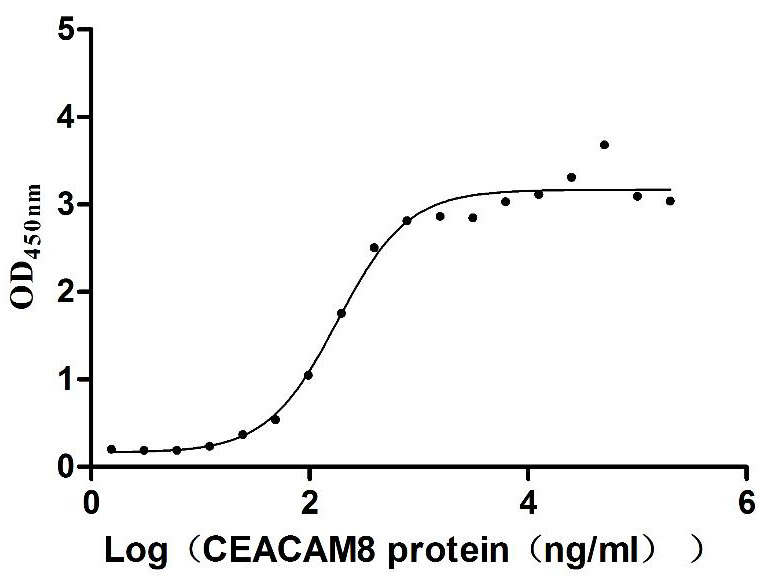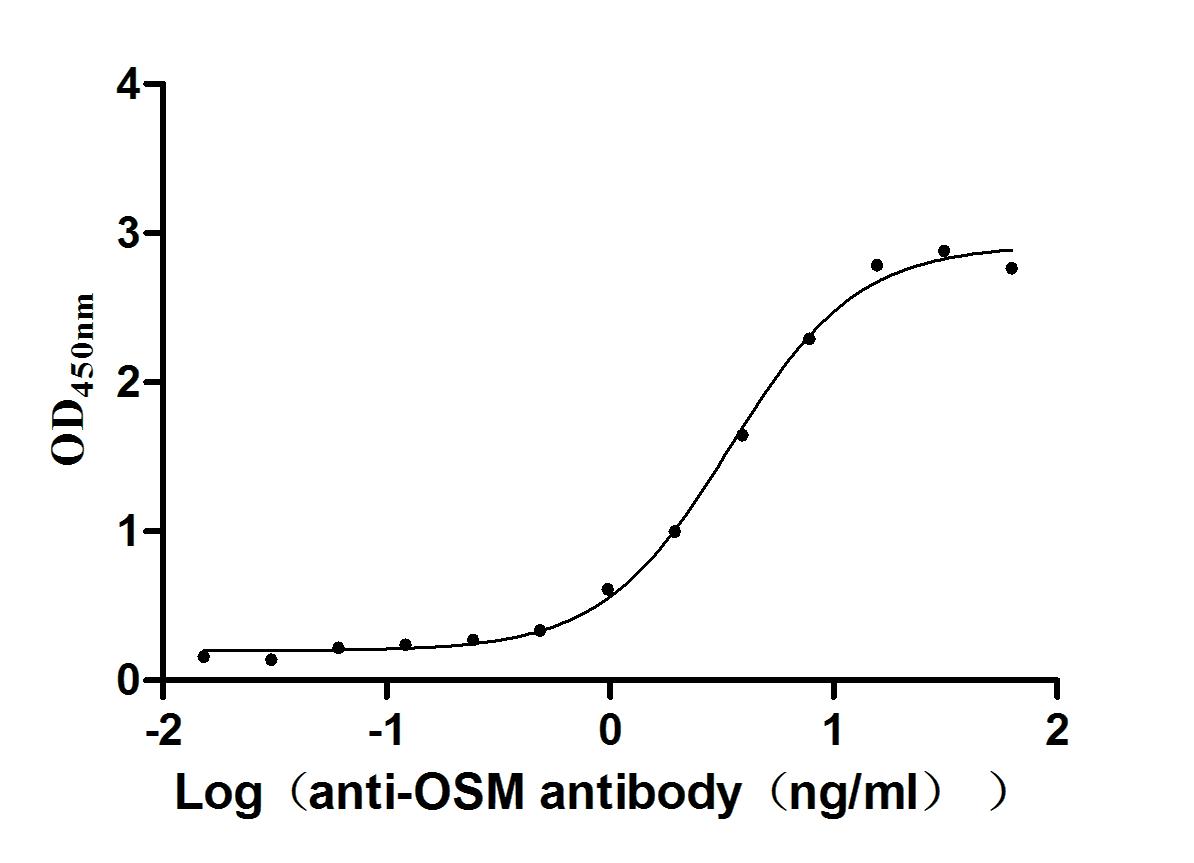Recombinant Rat Carbohydrate-responsive element-binding protein (Mlxipl), partial
-
中文名稱:大鼠Mlxipl重組蛋白
-
貨號(hào):CSB-YP855368RA
-
規(guī)格:
-
來(lái)源:Yeast
-
其他:
-
中文名稱:大鼠Mlxipl重組蛋白
-
貨號(hào):CSB-EP855368RA
-
規(guī)格:
-
來(lái)源:E.coli
-
其他:
-
中文名稱:大鼠Mlxipl重組蛋白
-
貨號(hào):CSB-EP855368RA-B
-
規(guī)格:
-
來(lái)源:E.coli
-
共軛:Avi-tag Biotinylated
E. coli biotin ligase (BirA) is highly specific in covalently attaching biotin to the 15 amino acid AviTag peptide. This recombinant protein was biotinylated in vivo by AviTag-BirA technology, which method is BriA catalyzes amide linkage between the biotin and the specific lysine of the AviTag.
-
其他:
-
中文名稱:大鼠Mlxipl重組蛋白
-
貨號(hào):CSB-BP855368RA
-
規(guī)格:
-
來(lái)源:Baculovirus
-
其他:
-
中文名稱:大鼠Mlxipl重組蛋白
-
貨號(hào):CSB-MP855368RA
-
規(guī)格:
-
來(lái)源:Mammalian cell
-
其他:
產(chǎn)品詳情
-
純度:>85% (SDS-PAGE)
-
基因名:
-
Uniprot No.:
-
別名:Mlxipl; Wbscr14; Carbohydrate-responsive element-binding protein; ChREBP; Class D basic helix-loop-helix protein 14; bHLHd14; MLX interactor; MLX-interacting protein-like; WS basic-helix-loop-helix leucine zipper protein; WS-bHLH; Williams-Beuren syndrome chromosomal region 14 protein
-
種屬:Rattus norvegicus (Rat)
-
蛋白長(zhǎng)度:Partial
-
蛋白標(biāo)簽:Tag?type?will?be?determined?during?the?manufacturing?process.
The tag type will be determined during production process. If you have specified tag type, please tell us and we will develop the specified tag preferentially. -
產(chǎn)品提供形式:Lyophilized powder
Note: We will preferentially ship the format that we have in stock, however, if you have any special requirement for the format, please remark your requirement when placing the order, we will prepare according to your demand. -
復(fù)溶:We recommend that this vial be briefly centrifuged prior to opening to bring the contents to the bottom. Please reconstitute protein in deionized sterile water to a concentration of 0.1-1.0 mg/mL.We recommend to add 5-50% of glycerol (final concentration) and aliquot for long-term storage at -20℃/-80℃. Our default final concentration of glycerol is 50%. Customers could use it as reference.
-
儲(chǔ)存條件:Store at -20°C/-80°C upon receipt, aliquoting is necessary for mutiple use. Avoid repeated freeze-thaw cycles.
-
保質(zhì)期:The shelf life is related to many factors, storage state, buffer ingredients, storage temperature and the stability of the protein itself.
Generally, the shelf life of liquid form is 6 months at -20°C/-80°C. The shelf life of lyophilized form is 12 months at -20°C/-80°C. -
貨期:Delivery time may differ from different purchasing way or location, please kindly consult your local distributors for specific delivery time.Note: All of our proteins are default shipped with normal blue ice packs, if you request to ship with dry ice, please communicate with us in advance and extra fees will be charged.
-
注意事項(xiàng):Repeated freezing and thawing is not recommended. Store working aliquots at 4°C for up to one week.
-
Datasheet :Please contact us to get it.
靶點(diǎn)詳情
-
功能:Transcriptional repressor. Binds to the canonical and non-canonical E box sequences 5'-CACGTG-3'.
-
基因功能參考文獻(xiàn):
- Authors have identified a previously unappreciated negative feedback loop by which glucose-induced ChREBP-beta downregulates ChREBP-alpha-signaling providing new insight into the physiological role of islet ChREBP-beta and into the regulation of glucose-induced gene expression. PMID: 27900263
- Integrative genomics outlines a biphasic glucose response and a ChREBP-RORgamma axis regulating proliferation in pancreatic beta cells. PMID: 27545881
- The involvement of ChREBP in FASN promoter histone modification. PMID: 28027934
- The crystal structure showed that AMP binds directly to the N terminus of ChREBP-alpha2 helix. Our results suggest that AMP inhibits the nuclear localization of ChREBP through an allosteric activation of ChREBP/14-3-3 interactions and not by activation of AMPK. PMID: 26984404
- Data suggest expression of ChREBPbeta isoform is up-regulated in pancreatic beta-cells in response to elevated glucose (i.e., hyperglycemic conditions); RNA interference of ChREBPbeta prevents beta-cell proliferation in response to hyperglycemia. PMID: 26384380
- The ChREBP mutant, W130A, did not exhibit HG-induced lipid accumulation and fibrotic proteins, suggesting that the Trp-130 residue in the MCR3 domain is important in the development of glomerulosclerosis. PMID: 24616092
- ketone bodies play an important role in the regulation of ChREBP activity by restricting ChREBP localization to the cytoplasm, thus inhibiting fat synthesis during periods of ketosis PMID: 23918932
- Data from pancreatic beta-cell line suggest that glucose-6-phosphate and xylulose-5-phosphate can activate ChREBP transactivity, but their potencies to induce ChREBP transactivity are much lower than that of glucose. PMID: 23257733
- Glucose, through the transcription factor ChREBP, controls beta cell differentiation from pancreatic progenitors. PMID: 22760788
- an important mechanism by which importin-alpha and 14-3-3 control movement of ChREBP in and out of the nucleus in response to changes in glucose levels in liver PMID: 21665952
- ChREBP directly regulates rat Gcgr expression in INS-1E cells. PMID: 22198437
- The activation and recruitment of ChREBP to several glucose-responsive genes were blocked by 1RH, indicating a general necessity for c-Myc in this process. PMID: 20382893
- Mlx is an obligatory partner of ChREBP in regulating lipogenic enzyme genes in liver. PMID: 15664996
- ChREBP.Mlx is the principal transcription factor regulating glucose-responsive genes in the liver and coordinately regulates a family of genes required for glucose utilization and energy storage PMID: 16885160
- Maximal glucose-induced expression of the L-PK gene in INS-1-derived 832/13 cells involves increased c-Myc abundance, recruitment of c-Myc, Max, and ChREBP to the promoter, and a glucose-stimulated increase in ChREBP transactivation. PMID: 17341548
- The ChREBP gene contains a cluster of putative transcription factor-binding elements consisting of two specificity protein 1 (Sp1) binding sites, a sterol regulatory element, and two nuclear factor-Y binding sites critical for ChREBP gene transcription. PMID: 17418800
- ChREBP activity is regulated by complex multisite phosphorylation patterns involving its N-terminal regulatory region PMID: 18215143
顯示更多
收起更多
-
亞細(xì)胞定位:Nucleus.
-
數(shù)據(jù)庫(kù)鏈接:
Most popular with customers
-
Recombinant Human Carcinoembryonic antigen-related cell adhesion molecule 6 (CEACAM6) (Active)
Express system: Mammalian cell
Species: Homo sapiens (Human)
-
Recombinant Human Transferrin receptor protein 1 (TFRC), partial (Active)
Express system: Mammalian cell
Species: Homo sapiens (Human)
-
Recombinant Human Oncostatin-M (OSM), partial (Active)
Express system: Mammalian cell
Species: Homo sapiens (Human)
-
Recombinant Human C-C chemokine receptor type 6(CCR6)-VLPs (Active)
Express system: Mammalian cell
Species: Homo sapiens (Human)
-
Recombinant Human Mucin-13(MUC13),partial (Active)
Express system: yeast
Species: Homo sapiens (Human)
















